‘Ello, John, got a new motor computer?
The most rubber-dated show in the RISC OS calendar, the RISC OS Southwest Show, took place this year just one week ago, on 21st February, 2015 – and it was a busy show, well attended by both visitors and exhibitors.
As usual, the event took place at the Webbington Hotel, Loxton, Somerset, on the side of Crook Peak in the Mendip Hills – a location which, while a touch harder to get to than most shows, is one which is undeniably scenic, with fantastic walking behind and above the venue, and splendid views from in front.
What you can see from in front, above, behind or below, though, isn’t the point – it’s what could be seen in the hall on the day of the show. So let’s get on with that.
With this show featuring the largest number of exhibitors since the Dynamic Duo took over its organisation, the hall was laid out in a different way to the last couple of shows. While the main exhibitors are usually around the outside of the hall at this event, with the charity stand and a couple of other tables in the middle, this time the tables were arranged to give the show a U-shape, with exhibitors around both the outside and inside of the ‘U’. Since the starting point for visitors, the table at which the entry fee was payable, was to the left of the door and on the inside of the ‘U’ it seems reasonable to follow a path that takes in that part of the hall first, then follow the outside back to the exit – so my trusty coin that usually helps decide the path gets a break this time!
Before the trip around the show, though, it’s worth noting that the Southwest Show usually features a ‘mobile’ show theatre, with those exhibitors giving presentations doing so from their own stand. At other shows, I’ve started either recording the presentations to watch later (and upload to YouTube), or watching recordings made by others. However, at the Southwest Show, it wasn’t practical to do this, and I also didn’t listen to the talks in full, only to portions as I was nearby taking photographs. So, with that noted, on with the show report.
The first table was manned by Bryan Hogan, collecting entry fees on behalf of the organisers and talking up ROUGOL, the London user group. ROUGOL meets on the third Monday of each month, and frequently attracts notable guest speakers – so if you’re a RISC OS user in or around the London area, this is a group that is well worth a visit.
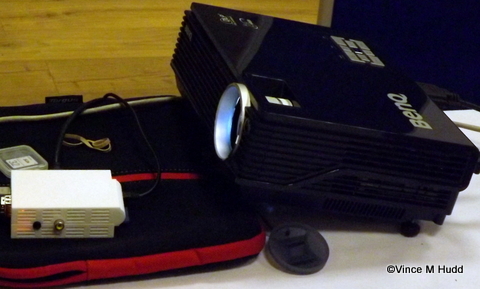
Bryan was followed by Adrian Lees and Neil Spellings, who were talking about and selling Aemulor Pi. The application first appeared for Castle’s Iyonix, and allowed the 32-bit computer to run 26-bit applications, and in recent years new versions have been written to do the same trick for other new platforms – and Aemulor Pi, as you might guess, is the solution for the Raspberry Pi.


Orpheus Internet was next, where Richard Brown – one half of the Dynamic Duo – was, as usual, bigging up the services of the most RISC OS-friendly internet service provider there is. Richard normally brings sweets to these events, but this year he instead brought cake – and not for the first time. The reason for the cake on this occasion, however, is that this year marks Orpheus Internet’s tenth birthday (and GeneSys Developments – the original company before taking over Orpheus, and which is now run alongside it – is twenty years old) – so happy birthday(s) to Orpheus/GeneSys. (But don’t harp on about it will you? Geddit? Geddit? Okay, I know it’s a lyre, not a harp, pesky pedants!)
Richard was also selling commemorative mugs proudly marking the anniversary – as well as mugs celebrating the launch of the new computer from R-Comp, but more on that later in the report!

Following the inside of the ‘U’ around, the other half was taken up by the well stocked charity stand, from which old books and magazines, as well as old software and hardware was available for purchase. Moss, who ran the stand, informed me at the end of the day that £107 was raised for Chidren’s Hospice South West, which aims “to build precious memories for families whose children are living with life-limiting or life-threatening conditions.”


Turning to the outer wall, the next exhibitor was Nigel Wilmott from North One Communications, demonstrating Organizer, the – no THE – personal information manager for RISC OS. There have been no significant developments since the London Show, where Organizer’s ability to link to Sine Nomine’s RiscOSM was demonstrated, but Nigel informed me that – subject to developer Martin Avison’s other commitments – the plan is to add a year planner display to the application.

Next along was the always well stocked CJE Micro’s stand, where the Doctor and his travelling companion Chris Evans and Andrew Conroy had, as ever, brought along everything but the kitchen sink in the TARDIS their car. The highlight of the CJE stand this year was a prototype version of a new piece of RISC OS hardware, a computer based around an IGEPv5 (Cortex A15). Having not heard the talk, and with no significant literature available at the show, I don’t have a lot of details – but what I gathered from talking to Andrew is that the computer is currently considered to be alpha-quality, and that it should hopefully reach a beta state by the Wakefield Show in April.
I also understand that CJE are planning a competition to give the new machine a snappy name – with the prize being a discount on the purchase of the machine – so get those thinking caps on now.
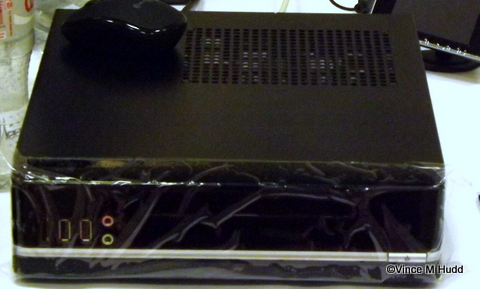
After CJE was Steve Fryatt, who it seems has finally acted upon the letters from my solicitor, and stopped infringing on my “haven’t done anything since the last show” trademark – because he has done something since the last show! There’s a new version of Floating Help, which was recently announced, and there’s also a selection of simple games – Hangman, Master(mind), Pairs, Solitaire, and (Noughts and) Crosses. These are all old games of his, which he has updated and incorporated into his new build environment, and licensed under the EUPL.

Crosses is particularly interesting – as well as the traditional version of noughts and crosses (at which it is unsurprisingly easy to beat), the game also plays a 3D variant, whereby the play-area is a 3x3x3 cube, rather than a 3×3 grid. The three layers are shown on screen side by side as three 3×3 grids, which does make it a little more difficult because it’s necessary to visualise these together as a cube in order to ‘think’ in 3D as you play.
Well, that’s my excuse for the computer beating me at this version, anyway!

Making a welcome return to RISC OS shows with an innovative new product, Martin Hansen was next with the MathMagical Software stand. Martin had a variety of things to sell, ranging from older products such as the Symmetry in Chaos Book, featuring output from Mathemagical’s Iconizer application, all the way up to newer products, such as the Raspberry Pi 2. Most notable, though was that new product – Los RISCOS 2013 wine, imported all the way from Chile.

No, wait – although Martin was selling that, it wasn’t the innovative new product! That was the nautical GPS software, and two hardware systems to run it. Martin describes the software as experimental, and its purpose is as a navigation aid for those who, like Martin, enjoy spending a little time on the open sea. The software itself is free – although currently only an alpha release – and uses charts derived from data from OpenSeaMap, the nautical equivalent to OpenStreetMap.
Fortran Friends were next, with their colourful, stellating polyhedrea – these being multi-faced solids whose edges and faces can be extended to form new, bigger shapes. Fortran Friends – a self-help group for users of the Fortran programming language – provide software to explore these polyhedra and stellations.
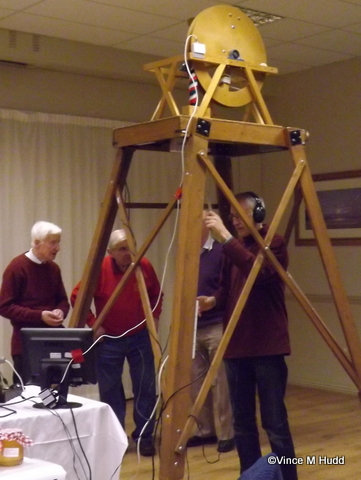
The ideal show centre piece that’s usually found anywhere but in the centre of the hall is John Norris‘ mini dumbbell – and true to form, this year, the centre is exactly where it couldn’t be found. The papier maché bell is mounted in a wooden frame, with a sensor attached so that the bell’s movement can be relayed to the computer. Being papier maché, the bell itself makes no sound – that’s the computer’s job – making it an ideal way to practice campanology (that’s bell ringing to you and me, and not something to do with analogies about camping) without disturbing the neighbours.
Next was John’s wife, Mary, with her Tasty Treats – a range of home made jams and chutneys, and this year a selection of muffins as well. I didn’t try the muffins, but I’m half way through the first of my two jars of jam, which has been going down well with my breakfast every day since the show. Tasty indeed!
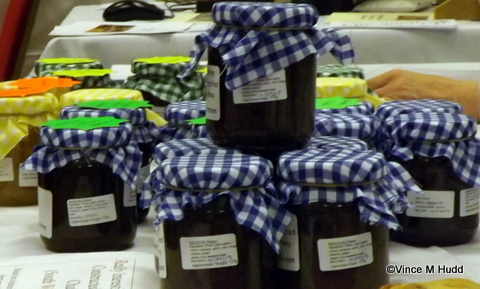
Next up was the show’s embarrassment – an exhibitor who had very cleverly forgotten to bring his stock of goods for sale along, instead leaving it on his desk at home, only realising the night before the show in the hotel bar. That would be me, then, with my Soft Rock Software hat on, and the stock in question being what I have left of the first batch of RiscPiC-mini cases. These cases, originally designed to house any of the Raspberry Pi models to date (except the Compute Module), are in fact only suitable for the earlier models of Pi – the newer B+ and Pi 2 models cause a noticeable warp in the case, which manifests itself as a prominent wobble when placed on a desk; my plan was to sell the remaining stock for the original Model B before attempting to tweak the design and ordering the next batch – and judging by the number of enquiries, I might have succeeded. Oh well.
As promised, though, I did deliver something new for 2015 at this show. The promise was that there would be a new poster – but in fact I had two new posters at this event. One was a warning that some badly programmed games would soon be available again (and featured a mistake in the title of one), and the other was advertising the 2015 meeting dates for the Bristol RISC OS Users.
The next exhibitor was a first timer for the Southwest Show – Hilary Phillips of Sine Nomine had made the trip with the latest version of RiscOSM, the application that uses data from OpenStreetMap to display maps on the RISC OS desktop. As well as selling the software on CD, as before, Hilary was also now selling it on micro SD-card – which is much more convenient for those RISC OS users with newer systems without an optical drive. Amongst other things, RiscOSM can import GPX files saved from GPS devices, such as routes recorded while out walking, and I asked Hilary about the possibility of a link to such a file in Impact – Sine Nomine’s database – triggering the route being imported and displayed in RiscOSM. This isn’t a possibility at the moment, but Hilary made a note of the idea with a view to giving it some thought at a later date.
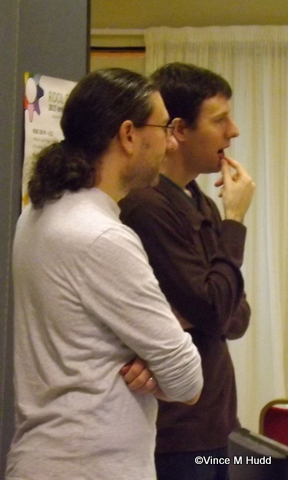
RISC OS Open Ltd had the next stand, where Steve Revill and Rob Sprowson were fielding people’s questions about RISC OS, and selling the latest goodies – including a card featuring a version of RISC OS suitable for the new Rasberry Pi 2. The company had access to the Pi 2 prior to its official launch, so that a RISC OS port could be made ready as soon as possible after its launch at the start of this month. In addition to changes to support the new version of the Raspberry Pi, the latest RISC OS release includes a number of other changes including alpha transparency support, improvements to the EtherUSB driver and DWCDriver, and – some might say most importantly – the inclusion of Hopper, a version of the game Frogger.

ROOL were also showing off a newly updated version of the RISC OS Style Guide – their first foray into printed material. The Style Guide should be considered the RISC OS developer’s equivalent to The Bible, since it describes the standards to which RISC OS applications should be written, in order that everything running on the desktop maintains a consistent look and feel – making it easier for new users to pick up and understand how the application works, and where to find common functions, and so on.
A printing problem meant the Guide wasn’t available to take away at the show, but orders were being taken so that the Guide could be sent out later; mine arrived yesterday, barely a week after the show.
David Snell occupied the corner next to RISC OS Open, where he was demonstrating ProCAD+. Amongst other things, ProCAD+ can import Ordnance Survey (NTF) and MasterMap (GML) files – and now, thanks to a new application called ProOSM, which is an OpenStreetMap file interpreter for ProCAD+, data from OpenStreetMap can be imported as well.
Thinking about the RiscPiC designs, I asked David about how ProCAD+ can be used to design something intended for output to a 3D printer – which I’ve found is best achieved by exporting designs as .STL files. Sadly, there is no support for this (as yet?) because David hasn’t found a consistent definition of the file format.
Magazines were the next order of the day, first with Jim Nagel of Abbey Press Glastonbury at the show with without the latest issue of Archive Magazine. Jim had been working hard to get an issue out in time for the show but, unfortunately, that wasn’t to be – and he has since decided to add a few pages, covering the show, so what we should soon receive is a slightly bigger and better copy that we would have received had it been available to pick up last week. What was available at the show, however, was a full-colour version of issue 23:9, the edition published for the 2014 London Show – nice.
The second magazine was, of course, Drag ‘n Drop. The on-off-on-off-under-new-management PDF magazine’s editor, Christopher Dewhurst, was showing off the latest issue, which was published at the end of January. As ever, punters could buy all twenty two (previously twenty one – the number has a tendency to rise, you know) issues to date on a USB stick – which doesn’t just include the PDF files as published, but also the Ovation/EasiWriter files and clip art used to create them.
The penultimate exhibitor was Martin Wuerthner of MW Software, demonstrating Artworks, EasiWriter, etc. Martin didn’t have any new versions, but – pleasingly – he did gain a couple of new customers at the show; most of his custom at shows is for upgrades to the latest versions, so to gain new users is always a pleasing outcome. There are no firm plans as yet, but Martin is considering whether to skip Wakefield this year and attend London, by which time, hopefully, he will have something new to show and sell.


And, finally, we get to the show’s headline act – R-Comp, who officially launched their new computer at the show, the ARMSX ARMX6. The computer is available in two form factors – one a desktop case similar to the ARMini and ARMiniX, with an A4 profile, but a little taller, and a larger case designed to be used as a tower. Only a small number of machines were brought to the show, with some of those already purchased and being collected on the day, so it was very much a case of first come, first served if you hadn’t already ordered your computer.
First come, first served? That’ll be me again, then – I was the first to buy one ‘off the shelf’ so to speak, and I picked up the tower configuration case (although I have it set up horizontally).
I’ve been too busy to explore it properly, but I have to say from my initial play that I am seriously impressed; I’ve already noted elsewhere that NetSurf on the ARMX6 is fetching and rendering pages from sites I regularly visit, such as The Register, faster than Firefox on my 2.5GHz Intel Core-i5 laptop (the processor in ARMX6 is a Freescale i.MX 6Quad running at 1.2GHz – and while it features four cores, compared to the i5’s two, RISC OS is only using one of them).
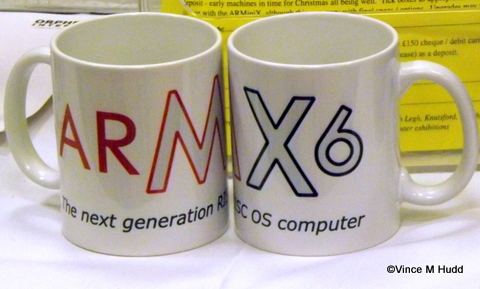
And with that, the show visitor will have reached the exit – so all that’s left to say must be “Goodbye” and “See you next year!”
Well, okay, perhaps a little more: I gather there were around ninety people through the door, though I’m not sure if that’s up or down on the previous year – but judging by how busy the show felt, and the number of faces I didn’t recognise, I’m inclined to say it’s probably an increase.
Exhibitors who arrive the night before have become accustomed to accessing the hall that night in order to set up their equipment, or at least stow it indoors, somewhere secure – which is quite important for exhibitors such as R-Comp, arriving with a supply of valuable new kit. However, that wasn’t quite possible this year, because the hall was booked out on the Friday evening for another event (as well as on the Saturday evening for a wedding – so the venue was very busy this year!) As a compromise, those who needed to do so could unload their equipment into another room the night before – but with the inconvenience in mind, Richard and Andrew were discussing whether or not to approach the hotel before they checked out to arrange a date nice and early for next year, and get confirmation in writing that access the night before would be possible.
No decision had been reached by the time I set off for home, but watch this space – it may very well turn out that we’ll have a date for the next Southwest Show much earlier than usual.
For additional pictures of the event, check out Steve Fryatt’s selection. Steve Revill had his camera set up next to the RISC OS Open stand so, hopefully, we should at some point see a time lapse video of the event on the RISC OS Open Vimeo page – so that’ll be a whole lot of photos displayed in a relatively short space of time.
And here are a few more from me that I didn’t drop into the main text above:

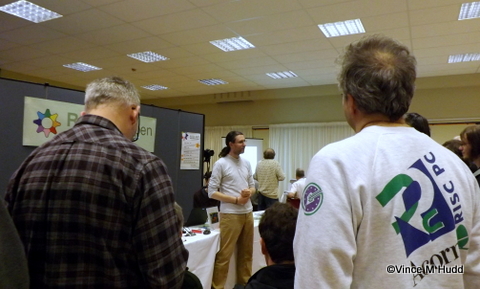



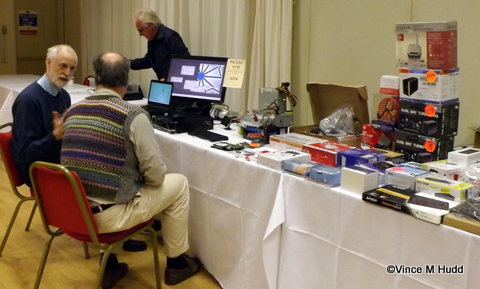
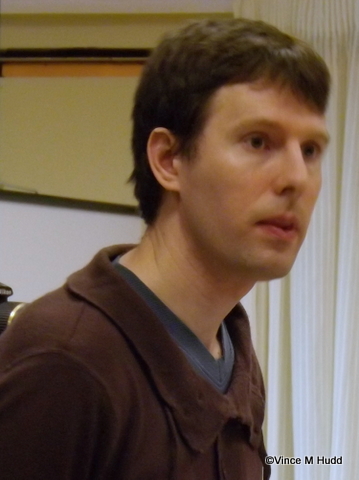

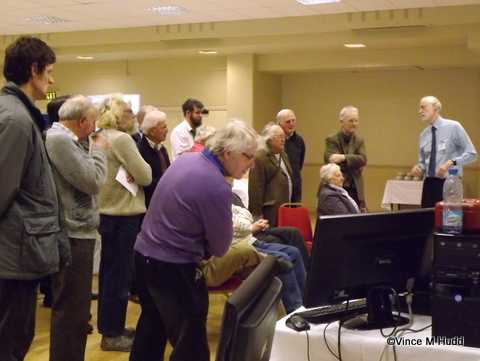
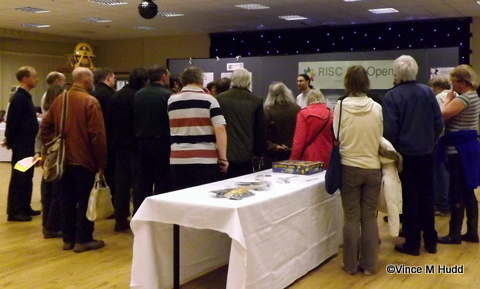
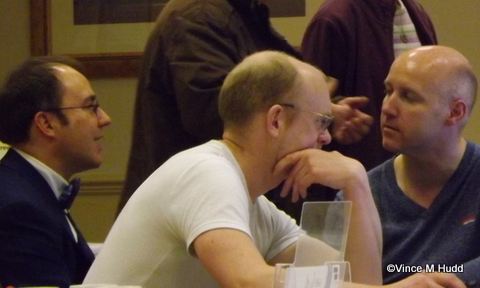


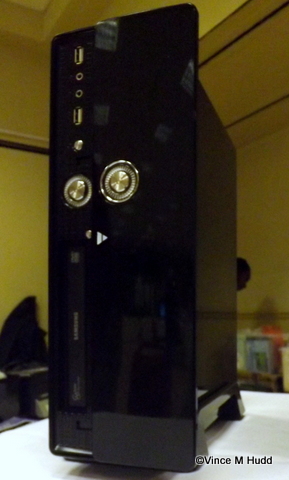
And now there really, really is nothing more to say, other than “See you at the next show!”



